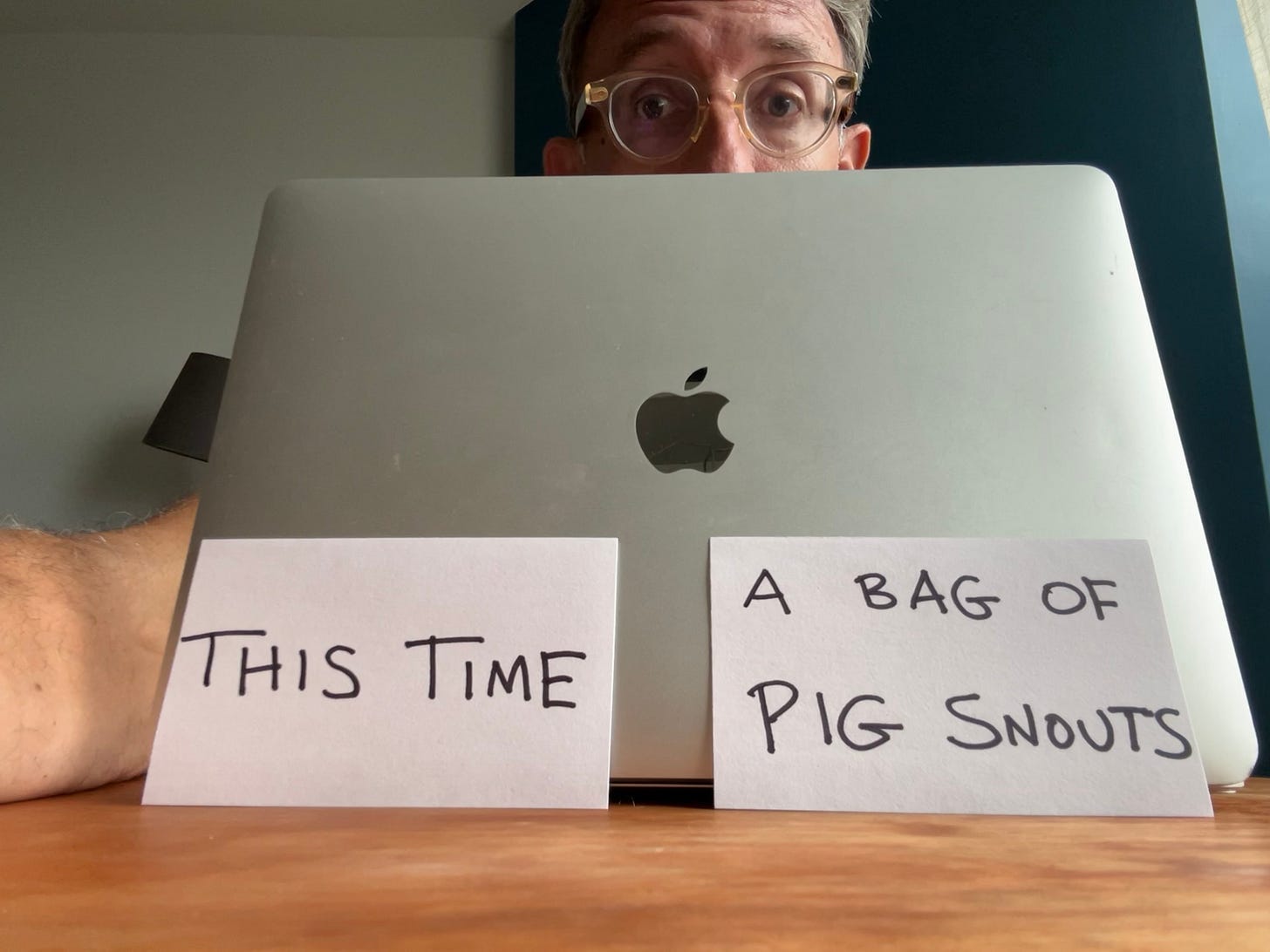I was so pleased when Jen reached out to tell me she was going to experiment with this tool, This Time/Next TIme, which I proudly claim is my own invention. I’ve even named my story consulting business after it.
I was even more pleased when she asked me to write a guest post about the topic. I read Jen’s work with Inspired, and I’m always impressed with her specific and useful advice. I saw she has a workshop coming up too which I’m very curious about.
WHO THE HELL AM I?
Among other things, I’m a long time screenwriter & creator of things who occasionally teaches screenwriting at NYU and Pratt Institute in Brooklyn. I was the Associate Director of Almanack Screenwriters, a nonprofit dedicated to supporting emerging film and TV writers. I’m also a story consultant for storytellers of all kinds and the founder of the new Storytellers Social Club. Highlights from my writing desk include the day Martin Scorsese agreed to executive produce one of my features, the time Alexander Payne reported that he cried while reading the end of one of my screenplays and when Phoebe Waller Bridge said she loved how I wrote about the octopus. None of those projects made it to the screen.
If you’re dazzled by my advice here you can learn more about me here.
This Time/Next Time
I try to share this tool with as many people as possible because I like talking about the creative process and I enjoy demystifying the writing process for those who need it. I’m not saying I’m the Johnny Appleseed of writing tips, but I do believe if more people use this tool, more stories will…fully…ripen?
In Good Writers Are Hot,I provided readers with one answer to the age old question How to Get Started, but This Time Next Time will help you Keep Going—you need both as illustrated in the chart below that outlines the writing process.
Step 1: Get Started
Step 2: Keep Going
Step 3: Finish.
Back when my stories were getting published on cocktail napkins and coasters in Buffa’s of New Orleans, LA, I read some advice from a famous writer—maybe Hemingway—who said he would stop his writing sessions at the start of a new or exciting idea in order to tap into that live wire at the top of his next session. The idea immediately resonated with me.
Anyone can have one good session, and plenty of writers begin projects with an inspired bang only to get lost and distracted in the inevitable chaos of the process. That’s why the world’s shelves are piled with unfinished manuscripts and broken dreams.
Hemingway, and all long time writers, know the truth: writers need to sustain that inspiration for days-weeks-months-years. At the very least we need to sustain it long enough to reach the end of what we’re writing. (refer back to Step 3)
After hearing the Hemingway tid bit, I started ending my sessions on a high note, so to speak, and immediately loved it. Soon I invented a way to formalize the experience: at the end of every writing session I would briefly summarize what I had accomplished this time and recorded where I would pick up next time. Before long, each of my projects had its own dedicated file, separate from the manuscript. Check out this picture of my Google Drive.
In those documents are months and months of notes tracking the development and evolution of any given project - writing session by writing session. I pulled some examples to further illustrate.
This time: got to pg 32; she’s motivated by money; he’s desperate to stop her;
Next time: pick up at the moment they meet again; remember to get weird;
This time: great but slow session; dynamic is super sensual but they don’t have sex yet;
Next time: stay in the moment; what do they each do after interrupted by neighbor;
This Time: he gets a bag of pig snouts; cut the exposition
Next Time: write first person monologues about what each character wants
This tool has been invaluable to me, especially as I’ve juggled more and more projects, jobs, and children over the years. But even without these earthly, adult responsibilities, a lengthy piece requires you to hold many elements in mind—plot, character, theme, yada, and even yada.
This Time/Next Time puts a pin in my process, safeguards my flow and reduces the time and blank stares at the start of a writing session. Consider it a head start for your brain—an early spark to more quickly ignite the fire. How many more metaphors can I use here?
I’ve shared this technique with students at NYU and Pratt Institute, the talented writers at Almanack Screenwriters and countless writer friends. Many have told me it’s helped their process. That makes me happy.
Storytellers Social Club
Check out what I’m doing over at Storytellers Social Club if you're interested in learning more. At the moment I’m engaged in The Oscar Project in which I’m watching all 85 movies that have won the Best Original Screenplay in order to extract storytelling tips and techniques. I’ve done three so far—The Great McGinty, Citizen Kane and Woman of the Year—only 82 to go. Trust me, I’m using This Time Next Time to keep track of this project.
Try it yourself! And please share your experience with me and Jen. And if you have a different tool that works for you please share that with your fellow creatives here.
Keep reading with a 7-day free trial
Subscribe to INSPIRED to keep reading this post and get 7 days of free access to the full post archives.







